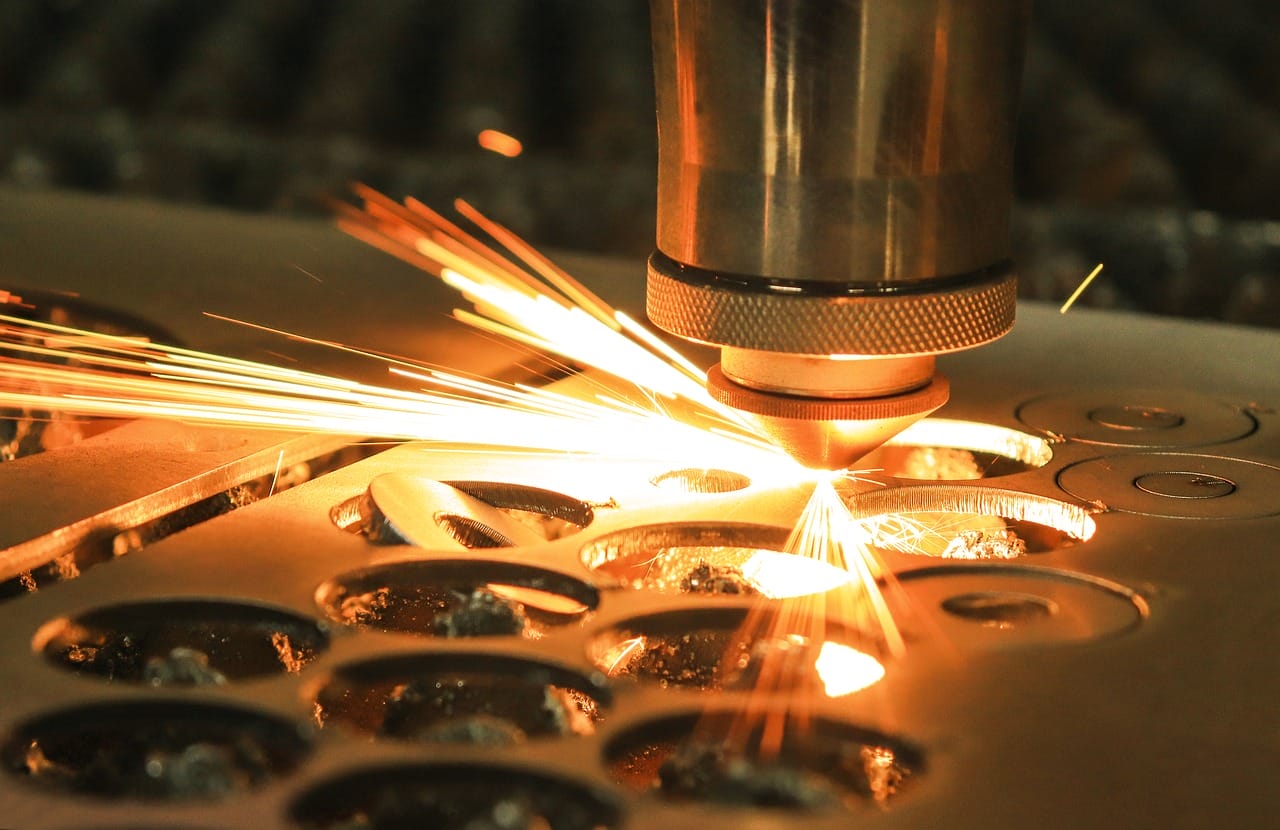Since the launch of the first production laser in 1965, which was used by the American company Western Electric to drill holes in diamond dies, laser cutting has become a standard process that is used by many different industries.
Let’s take a look at just a few of today’s industries that utilize the application of laser cutting.
What is laser cutting?
First off, let us take a brief look at what laser cutting is.
Basically, laser cutting is a versatile manufacturing method that employs a high-powered laser to cut or engrave various materials.
A computer system directs the laser beam onto the material’s surface, which subsequently heats and either melts, burns or vaporizes to form a precise cut. From sheet metal laser cutting to cutting through wood, glass, and even diamonds, the process of laser cutting is suitable for a wide variety of materials and tasks, which is one reason why it is so popular across various industries.
Moreover, laser-cutting machines are capable of producing complex shapes with smooth edges that conventional methods might struggle with – while keeping waste minimal. Hence, it is considered an innovative solution for design and manufacturing needs across the board.
The Automotive Industry
Laser cutting plays an integral role in the automotive industry. Mostly, manufacturers use lasers to shape car parts. Thanks to the high degree of accuracy offered, errors are minimized, which leads to reduced waste and cost savings.
The process of laser cutting is ideal for creating complex part shapes like gears as well as for crafting intricate designs in custom car builds or restorations.
The Construction Industry
Laser cutting also holds considerable value in the construction industry. It is the preferred method for cutting the structural steel that is used in building frameworks, for instance.
With its unmatched precision, laser cutting enables construction firms to achieve complex designs and detailing.
Furthermore, laser cutting fosters efficiency in production. For example, many components for prefabricated structures are produced with laser technology. This ensures uniformity across all pieces and speeds up assembly times.
The Aerospace Industry
The aerospace industry extensively uses laser cutting. One of the key applications is in the production of aircraft components, which require the utmost precision and quality.
Many airplane parts, for instance, are made from high-strength alloys. Laser cutting is a preferable method due to its capacity to cut through these tough materials without compromising accuracy.
Moreover, manufacturers use laser cutting technology for components like turbine blades in jet engines. This requires highly detailed work that can only be achieved with such advanced technology.
The Electronics Industry
In the electronics industry, laser cutting is a powerful tool due to its ability to handle intricate designs with precision.
After all, computer chips and circuit boards are packed with fine details that require an exact approach. When creating printed circuit boards, for example, manufacturers rely on laser cutting to etch precise patterns. This method outperforms traditional drilling due to its speed and accuracy.
Similarly, in semiconductor production, laser cutting perfects the silicon wafers used in various electronics.
The Medical Equipment Industry
Lastly, laser cutting technology has several critical applications in the medical equipment industry. The precision, versatility, and repeatability of laser-cutting processes make it particularly suitable for creating essential medical tools and devices.
For instance, consider surgical instruments like scalpels or forceps. Their production demands intricate detailing and extreme accuracy, which can easily be fulfilled by laser cutting. The manufacturing of prosthetic limbs also utilizes laser cutting to ensure a perfect fit for the recipient.
Even disposable items, like tubes or containers, can be manufactured efficiently with laser cutting.




